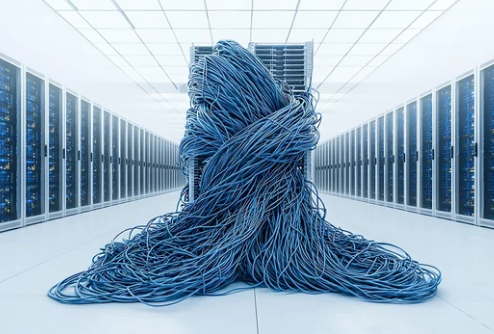Ethernet connections are often the most reliable way to get fast internet, especially for work or streaming. However, problems can arise that stop the connection from working properly. The main causes of Ethernet issues usually involve the cable, the port, driver problems, or settings within the device.
Knowing how to quickly find and fix the problem can save time and frustration. Simple steps like checking the cable, resetting the network adapter, or updating drivers often solve most issues. This guide will help readers understand common Ethernet problems and how to fix them effectively.
By following a clear, easy approach, anyone can troubleshoot Ethernet troubles and get their connection back up and running with minimal fuss.
Key Takeways
- Most Ethernet problems come from hardware or software issues.
- Simple checks and resets fix many connectivity errors.
- A clear troubleshooting process speeds up solving problems.
Diagnosing Ethernet Connection Problems
To find the cause of an Ethernet issue, several checks are needed. Physical connections, network adapter function, router and switch status, and device testing all play crucial roles in pinpointing the problem. Each area requires focused steps to identify issues accurately.
Identifying Physical Cable Issues
Start by inspecting the Ethernet cable itself. Look for visible damage such as cuts, kinks, or frayed ends. A damaged cable often causes intermittent or no connection.
Next, ensure each cable end is fully plugged in. Loose connections at the router, switch, or PC can stop communication.
Try swapping the current cable with a known-good one. If the connection improves, the original cable is likely faulty.
Check the cable type. Use at least a Cat5e cable for most networks. Older cables may not support higher speeds or stable connections.
Confirm the Ethernet port on the PC and router is clean and free from dust or debris.
Checking Network Adapter Status
He or she should open the device’s network settings to see if the Ethernet adapter is enabled.
Look for a yellow warning sign or red cross in the device manager next to the Ethernet adapter. These symbols indicate driver or hardware issues.
Updating or reinstalling the network adapter driver can fix many software-related problems.
Verify that the adapter shows as connected when the cable is plugged in. If it says “Network cable unplugged,” the problem may be physical or driver-related.
Disabling and then re-enabling the adapter may reset its function.
Verifying Router and Switch Functionality
The Ethernet ports on a router or switch can sometimes fail or be disabled.
He or she should switch the cable to a different port to test if the original port is defective.
Restarting the router or switch can also fix temporary glitches affecting connection.
Check the router’s settings to ensure its Ethernet ports are enabled and configured correctly.
A router with many connected devices may experience congestion causing slow or dropped connections.
If the router has indicator lights, verify the port’s light turns on when a cable is connected.
Testing with Different Devices
To isolate the problem, try connecting a different computer or laptop with the same Ethernet cable.
If the other device connects without issue, the original PC may have the problem.
If the second device also fails to connect, the issue likely lies with the cable, router, or switch.
Testing multiple devices helps narrow down the source of the connection failure.
Using known-working hardware provides clear results and helps avoid false conclusions.
Resolving Common Ethernet Connectivity Errors
Fixing Ethernet issues often involves updating device software, adjusting network settings, checking security preferences, and inspecting hardware. These steps address most causes of slow, dropped, or no connections.
Updating Network Drivers
Outdated or corrupted network drivers can cause Ethernet connection problems. Drivers are software that let the computer communicate with the Ethernet hardware.
Users should open their device manager, find the network adapter, then check for driver updates. Updating to the latest driver version can fix bugs and improve performance.
If no update is available, reinstalling the driver may help. This involves uninstalling the network adapter and restarting the computer to let the system reinstall it automatically.
Keeping drivers updated prevents compatibility issues with the operating system and other software. It is a key step before trying more complex troubleshooting methods.
Configuring IP Address Settings
Incorrect IP address settings can stop a device from connecting properly. An IP address identifies a device on the network and must be set correctly.
Users should check if the device is set to get an IP address automatically via DHCP. If not, they can enable this in the network adapter’s settings.
Manually assigning an IP address requires making sure it matches the network’s range and does not conflict with other devices.
To fix IP conflicts, releasing and renewing the IP address using commands like ipconfig /release and ipconfig /renew on Windows can help restore connectivity.
Addressing Firewall and Security Conflicts
Firewalls and security software sometimes block Ethernet connections or interfere with network traffic. This can cause limited or no access messages.
Temporarily disabling these protections helps determine if they are the cause. If the connection works after disabling, users should create exceptions for trusted networks.
Adjusting firewall settings to allow Ethernet traffic and updating security software rules reduces false blocks without sacrificing protection.
Users must be cautious when changing security settings and reactivate protections after testing to keep their systems safe.
Replacing Faulty Hardware
Faulty cables, connectors, or Ethernet ports are common reasons for connection failures. Damaged or loose cables can cause dropped or slow connections.
Users should inspect Ethernet cables for visible damage or wear. Testing with a new cable helps identify if the cable is the issue.
Checking the Ethernet port for dirt or damage is important. If the port appears faulty, using a USB-to-Ethernet adapter can bypass the problem.
Replacing damaged hardware components ensures stable and reliable Ethernet performance. It is often the final step after software fixes fail.
Also Read :
